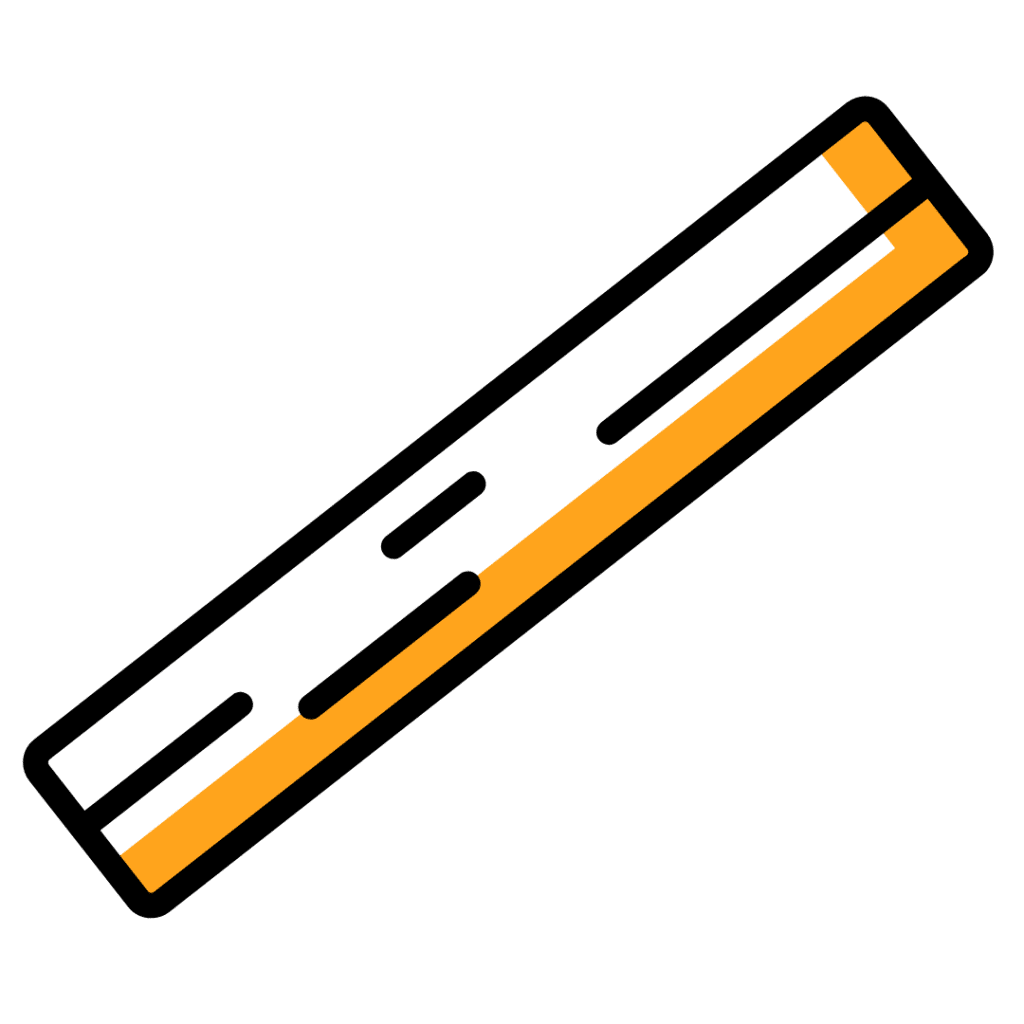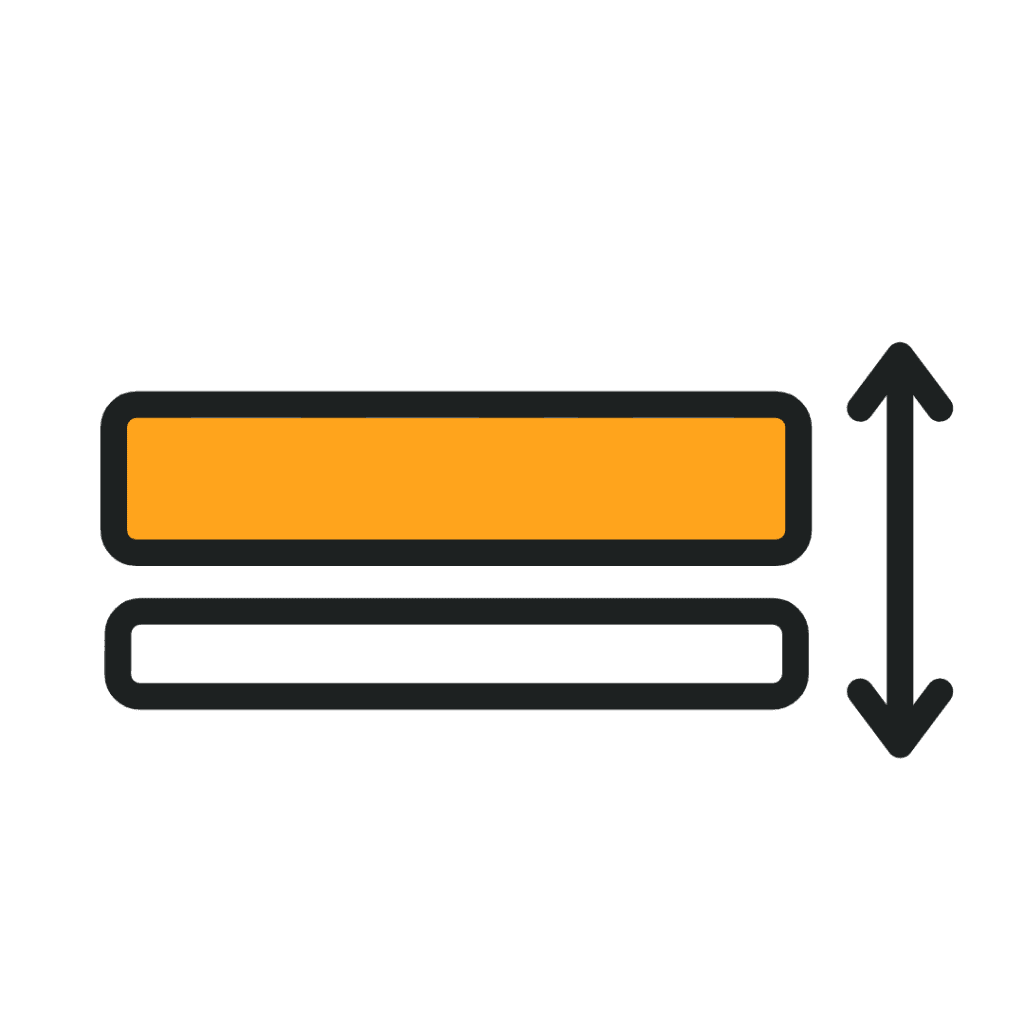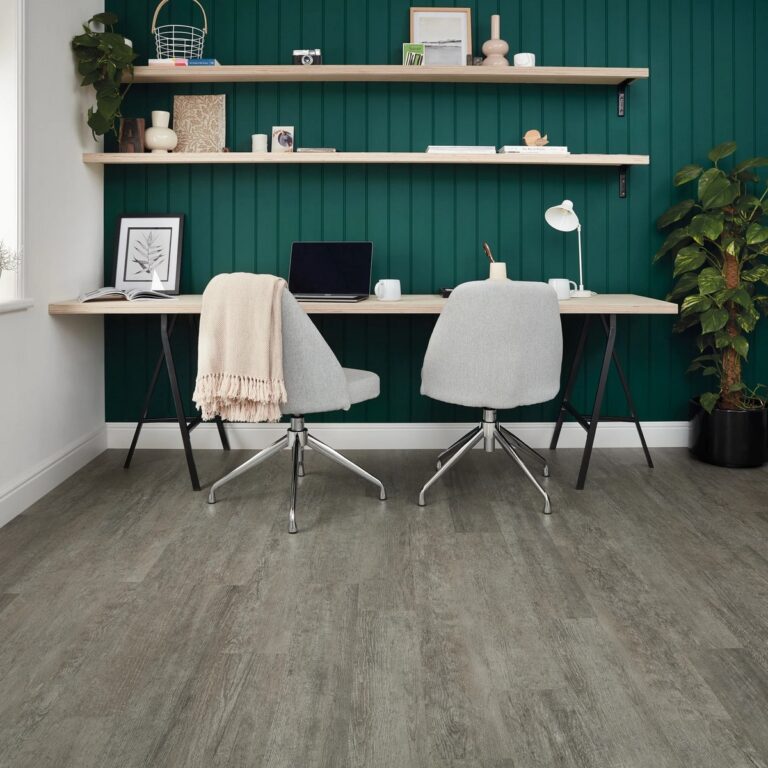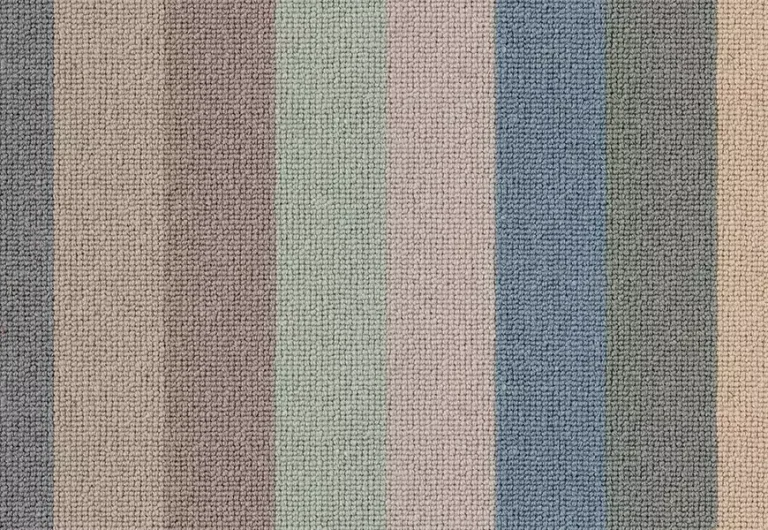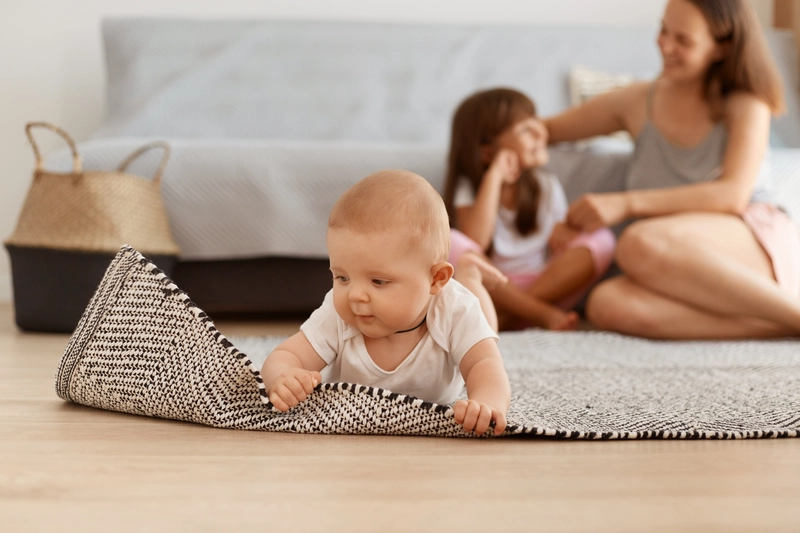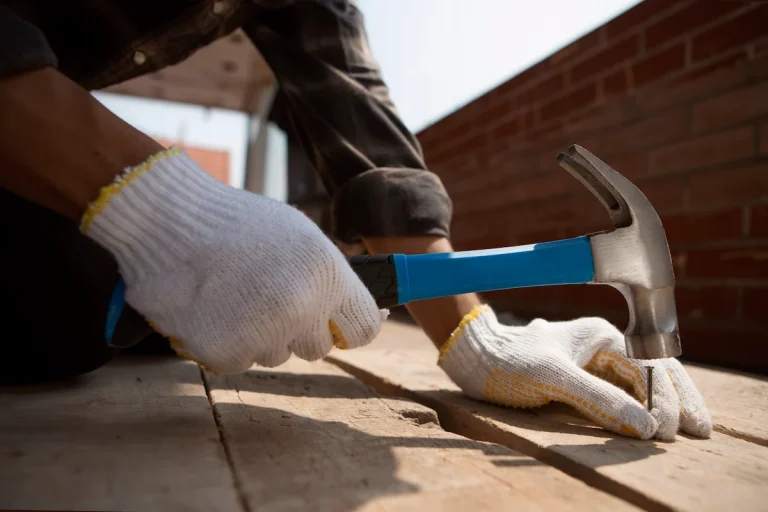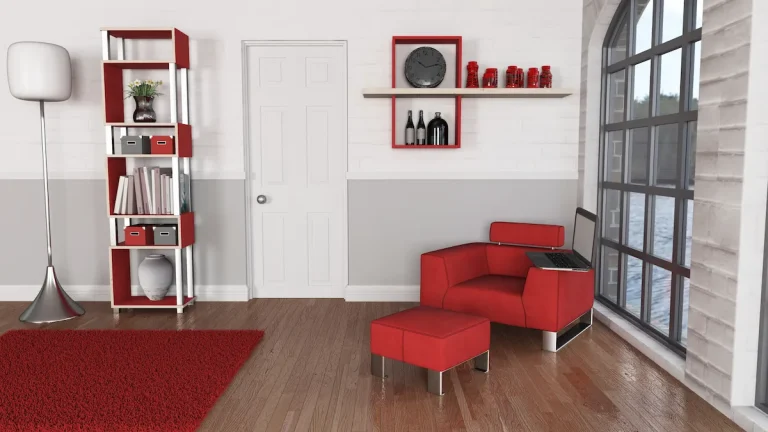Artificial grass provides a vibrant, green alternative to natural lawns. Understanding the proper techniques for joining artificial grass is essential for achieving a seamless appearance and texture, with careful attention to proper seaming.
Whether one is new to the installation of synthetic turf or seeking to enhance their existing technique, this DIY guide encompasses all necessary information regarding the joining process of artificial grass. From various joining methods, including adhesive tape and glue, to strategies for repairing seams, we offer practical guidance to ensure that your turf installation is not only aesthetically pleasing but also durable for many years.
What Is Artificial Grass?
Artificial grass, commonly referred to as synthetic turf, is a manufactured surface designed to imitate the characteristics of natural grass. It is frequently used in a variety of applications, including residential lawns, sports pitches, and commercial landscapes, due to its durability and minimal maintenance requirements.
Advances in technology have enabled modern artificial grass to closely replicate the appearance and texture of natural grass blades and fibres, yielding an aesthetic that is both functional and visually appealing. This versatile solution significantly reduces the need for watering, mowing, and fertilising, making it an excellent choice for environmentally conscious homeowners and businesses that desire a pristine lawn without the complexities associated with traditional gardening, including cutting grass and maintaining grass blades.
Why Join Artificial Grass?
Joining artificial grass is a critical step in the installation process, ensuring that the turf pieces align seamlessly and maintain an aesthetically pleasing appearance. Proper seaming techniques are essential to prevent visible lines between sections, which can detract from the overall presentation of a flawless lawn.
Whether one is a DIY enthusiast or engaging professional services, understanding the significance of effective joining methods can greatly influence the durability and longevity of artificial turf by ensuring proper seaming and adherence. By properly adhering seams and utilising appropriate joining techniques, optimal results can be achieved that enhance both the functionality and visual appeal of the outdoor space.
Some Methods for Joining Artificial Grass
In the process of joining artificial grass, several methods are available to create a secure and seamless joint between turf pieces using various joining techniques, each presenting distinct advantages. A thorough understanding of these different joining techniques is essential for achieving a durable and aesthetically pleasing finish in turf installation.
Common methods include the use of jointing tape, adhesive, and stitching, each necessitating specific tools and materials as installation accessories. By carefully selecting the most appropriate joining method for a given project, one can ensure effective adhesion and minimise the risk of seam separation or visible lines, ultimately contributing to a high-quality artificial grass installation.
1. Using Adhesive Tape
Utilising adhesive tape is a widely accepted joining technique for artificial grass, providing a prompt and effective method for establishing a robust turf joint. This approach entails placing jointing tape between the edges of the grass seams, facilitating a secure bond when applied correctly. Adhesive tape is particularly advantageous in scenarios requiring swift installation, as it simplifies alignment and eliminates the necessity for extensive tools or additional adhesives, like weighted planks or fixing pins.
The efficacy of this method is contingent upon the meticulous application of the tape to ensure proper alignment of the grass fibres, thereby preventing any visible lines or seams that could detract from the overall appearance of the lawn.
Preparation constitutes the initial crucial step to achieving the desired results with this technique. Before applying the adhesive tape, it is imperative to ensure that the base surface is clean, dry, and devoid of debris to ensure proper adherence.
Proper alignment is essential during the installation process; therefore, dedicating time to seamlessly fit the pieces together will enhance both the aesthetic appeal and durability of the turf.
- Begin by laying out the artificial grass pieces, ensuring they fit tightly together.
- Once positioned, carefully peel back the seams to expose the area where the tape will be applied.
- Apply the tape generously along the seam, ensuring it covers the entire length and is pressed firmly in place using weighted planks or other methods.
A recommended practice is to utilise a roller or to step firmly on the seam to maximise adhesion. Following the application, it is essential to inspect for any gaps or misalignments to ensure a flawless finish. Adhering to these steps will yield a clean, professional-looking turf joint that enhances both the functionality and aesthetic of any landscape project.
2. Using Adhesive Glue
Utilising adhesive glue is an effective joining method for artificial grass, providing robust adherence between seams for a seamless finish. This approach typically involves applying a specialised joining adhesive along the edges of the turf pieces, ensuring a secure bond when pressed together, minimising any visible joins. Adhesive glue is particularly advantageous due to its capacity to fill minor gaps, offering additional support against movement and wear over time. When selecting this method, it is essential to choose high-quality glue specifically designed for synthetic turf to ensure optimal results and the longevity of the installation.
To commence the process of effectively using adhesive glue, it is crucial to prepare the surfaces appropriately. This involves ensuring that both the base and the underside of the artificial grass are clean, free from debris, and dry.
- Surface Preparation: Remove any dust, dirt, or remnants of old adhesive to promote better adhesion and optimal results.
- Application: Apply the joining adhesive generously along the seams, utilising a trowel for even distribution.
- Drying Times: Ensure quick drying by allowing adequate drying time as specified by the glue manufacturer, typically between 30 to 60 minutes, before engaging with the area.
Ultimately, the application of adhesive glue not only streamlines the installation process but also enhances the durability of the artificial grass, thereby preserving the aesthetic appeal of outdoor spaces for years to come.
3. Using Stitching
Stitching is a traditional method for joining artificial grass that combines durability with a seamless aesthetic, effectively emulating the appearance of natural grass.
This technique entails sewing the edges of turf pieces together using a specialised mastic gun or stitching tool, which ensures that the grass fibres are intertwined for increased strength, creating hidden joins. To achieve optimal results, it is essential to prepare by gathering necessary tools, including a heavy-duty sewing machine or a handheld sewing tool, along with UV-resistant thread, and other installation accessories.
Steps:
- Prepare the turf: Neatly cut the edges of the grass to prevent fraying.
- Align the pieces: Ensure that the pieces of turf are properly aligned to maintain a uniform appearance.
- Sewing technique: Employ a simple running stitch or a zigzag stitch to provide strength while allowing for flexibility, ensuring the stitching does not create visible lines.
These fundamental steps, accompanied by meticulous attention to detail, significantly enhance not only the aesthetic appeal but also the longevity of the grass installation. A well-executed stitching process results in a robust and durable joint capable of withstanding heavy use while maintaining an attractive finish over time.
4. Using Heat Seaming
Heat seaming is an advanced joining technique for artificial grass that employs heat to bond the seams of turf pieces, resulting in a seamless and durable joint. This method utilises a specialised heating tool to melt the edges of the synthetic turf, facilitating their fusion as they cool. Heat seaming is particularly esteemed for its ability to produce an inconspicuous seam, thereby enhancing the overall aesthetic of the installation. This technique not only optimises visual appeal but also provides excellent resistance to water and environmental factors, ensuring the longevity of the turf joint.
The heat seaming process necessitates specific equipment, including heat seam tape, hot melt adhesive, and seam sealer, ensuring the creation of a durable joint seam. To achieve the best results, it is essential to adhere to the following step-by-step instructions:
- Begin by preparing the surface, ensuring it is clean and dry.
- Cut the edges of the turf pieces to create a straight, clean seam, leaving a 2-3mm gap between the pieces.
- Position the heat seam tape beneath the seam, ensuring it is centred for proper alignment.
- Apply a consistent bead of hot melt adhesive along the seam.
- Heat the seam with the specialised tool, applying pressure to fuse the edges together, and ensuring the cuts are neat and the grass fibers are blended properly.
- Allow the seam to cool, and apply a seam sealer for additional protection.
To ensure optimal outcomes, it is advisable to avoid working in windy or extremely hot conditions, as these factors may adversely affect the adhesive and fusion quality. Regular inspection of the seams for integrity is also recommended to maintain the durability of the turf installation over time.
How to Join Artificial Grass Without Tape
Joining artificial grass without the use of tape can be accomplished through various alternative methods that ensure durability and a seamless appearance. Techniques such as adhesive glue, stitching, and heat seaming can effectively connect turf pieces while aligning turf carefully to prevent visible seams.
Each method presents distinct advantages and may be chosen based on specific installation requirements and individual preferences. By selecting the appropriate joining technique and ensuring proper application, one can achieve an aesthetically pleasing and long-lasting artificial grass surface that aligns with desired expectations.
1. Using Adhesive Glue: Installation Tips
Using adhesive glue to join artificial grass without the use of tape is a straightforward and effective approach that guarantees strong adherence between seams. This method involves applying a specialised joining adhesive along the edges of the turf pieces and pressing them together to form a secure bond. It is imperative to select a high-quality adhesive specifically formulated for turf installation to achieve optimal results and to prevent any future separation. Adhering to the manufacturer’s instructions regarding application and drying times will ensure the durability and longevity of the joint. Additionally, securing the edges with nails can enhance the bond strength.
To commence this process, it is essential to adequately prepare the surface. First, ensure that the area is clean, devoid of debris, and dry, as these conditions enhance the adhesive’s bonding effectiveness.
- Ensure that any existing grass or loose materials are completely removed.
- Trim the edges of the artificial grass with a sharp knife to ensure a snug fit.
- Apply a suitable turf seam adhesive liberally along the edges of the pieces to be joined.
When applying the adhesive, use a notched trowel to achieve an even distribution, which is critical for establishing a consistent bond. After application, firmly press the pieces together, ensuring that no air pockets are trapped between them. It is also important to consider the ambient temperature and humidity, as these factors can influence drying times and the overall strength of the adhesion. Allowing for the recommended drying time will ensure a lasting joint.
2. Using Stitching: Joining Steps
Stitching presents an effective method for joining artificial grass without the use of tape, providing a strong connection between pieces that enhances both durability and appearance. This technique involves sewing the edges of the turf together using a stitching tool, ensuring that the grass fibres are securely intertwined for maximum strength. This method is ideal for a professional join.
While this method may require a greater level of skill and time, the outcome is a robust joint that minimises visible seams and preserves the natural appearance of the grass. Proper stitching techniques can significantly extend the longevity of the turf installation.
To achieve successful results with the stitching method, it is essential to gather a few necessary tools and understand the techniques involved. The following is a concise list of required tools:
- Stitching needle
- Durable thread designed for artificial turf
- Scissors
- Utility knife for trimming excess fibres
Once the tools are prepared, commence by overlapping the edges of the turf pieces, ensuring that the grass fibres are aligned properly. Utilising the stitching needle, carefully sew through the edge of one piece and into the adjoining piece, taking care to pull the thread taut without causing distortion.
An effective technique involves using a whip stitch pattern, which provides additional strength and increases the lifespan of the installation. Upon completion of the stitching, trim any excess grass fibres to achieve a clean finish. This meticulous approach results in secured grass fibres, blending turf effectively, and enhances the overall aesthetics of the area.
3. Using Heat Seaming: Professional Joins
Heat seaming is an advanced technique for joining artificial grass without the use of tape, resulting in a durable and aesthetically pleasing seamless joint. This method employs a heating tool to melt the edges of the turf pieces, allowing them to bond as they cool. The outcome is an almost imperceptible seam that significantly enhances the visual appeal of the turf installation. Heat seaming is particularly beneficial for outdoor applications, as it establishes a robust bond that is resistant to water and environmental fluctuations, thereby ensuring the longevity of the artificial grass. This method allows for careful alignment of the edges.
This technique not only streamlines the installation process but also minimizes material waste and reduces the visibility of seams that may detract from the overall aesthetic. Before commencing the installation, it is crucial to assemble the necessary equipment, which includes a heat gun or welding machine, seam tape, and safety gear such as gloves and goggles.
- Step 1: Prepare the edges of the turf by trimming them to fit together snugly.
- Step 2: Position the seam tape beneath the edges of the turf where heat will be applied.
- Step 3: Apply heat evenly to the edges, maintaining a consistent distance to prevent burning.
- Step 4: Once the edges are adequately melted, press them together firmly and allow them to cool.
These steps ensure a strong and durable bond, making heat seaming a preferred method for professional-grade turf installations that aim to achieve a flawless finish while enhancing durability and reducing maintenance concerns.
The Best Way to Join Artificial Grass
Determining the most effective method for joining artificial grass involves several critical factors that can significantly impact both the joining process and the final outcome. Key considerations include the type of artificial grass, the installation location and climate, as well as the available budget. Each of these elements plays an essential role in selecting the most appropriate joining technique. Proper cutting tufts to fit snugly can also enhance the overall grass appearance.
Whether one chooses adhesive tape, glue, stitching, or heat seaming, a thorough understanding of the specific requirements for the installation will help achieve the desired durability and aesthetic appeal of the lawn. Each method presents distinct advantages, making it imperative to evaluate these factors for the successful installation of turf.
Factors to Consider
When determining the most effective method for joining artificial grass, it is imperative to consider several critical factors, including the type of artificial grass, the specific location and climate, and any budget constraints. Therefore, a thorough evaluation is essential to ensure a successful installation that meets both performance expectations and longevity standards.
The type of artificial grass selected significantly influences the appropriate joining technique. For example, certain products, depending on their fibre composition and tufting density, may necessitate the use of heat-welded seams or adhesive to achieve optimal results. Proper stitch/seam techniques are crucial for ensuring long-lasting joins.
Additionally, when assessing the location and climate, factors such as moisture levels, temperature fluctuations, and UV exposure can significantly affect the efficacy of various adhesives or seam tapes. As a result, certain methods may be more suitable for humid or arid environments.
Recognising the importance of budget constraints is also vital, as premium-grade joining materials may offer enhanced durability and ease of installation but may pose financial challenges for some projects. By carefully weighing these factors, property owners can select the most effective approach for their artificial grass installation, ensuring that it meets aesthetic requirements while aligning with practical performance and financial objectives.
a. Type of Artificial Grass
The type of artificial grass significantly influences the most effective joining methods required to achieve an optimal finish. Additionally, following a detailed DIY guide can help in achieving seamless joins.
When selecting the appropriate installation technique, it is essential to consider the characteristics of the turf. For instance, synthetic grass with a pile height exceeding two inches may necessitate the use of specialised adhesives or heat-welding methods to secure seams properly. Conversely, shorter pile heights may allow for simpler glue and tape techniques without compromising aesthetics or structural integrity.
- Durability: The joining method should reflect the intensity of usage, as areas subject to heavy foot traffic require stronger bonds.
- Appearance: Seam visibility can be minimised through precise techniques, particularly for premium turf types.
- Maintenance: Certain joining methods can facilitate future repairs, especially for high-quality grass.
Ultimately, understanding the relationship between turf quality and joining methods ensures a long-lasting and visually appealing installation.
b. Location and Climate
The location and climate in which artificial grass is installed are critical factors that can significantly influence the performance of various joining methods. Different climates present unique challenges, including temperature fluctuations, humidity levels, and exposure to UV rays, all of which can affect the longevity and effectiveness of the joints.
For example, in coastal areas characterised by high salt exposure and moisture, it is imperative to select stainless steel or corrosion-resistant materials for joining to prevent rust, which can compromise the structural integrity over time.
- In desert climates, the extreme heat may accelerate the degradation of traditional adhesives, thereby necessitating the use of heat-resistant alternatives.
- Additionally, regions that experience heavy snowfall should consider joining methods that account for the weight of snow and the potential for ice formation.
Consequently, it is essential to assess local environmental conditions when determining the most suitable methods for installing artificial grass. By implementing tailored solutions, one can not only enhance durability but also ensure that the installation effectively withstands various weather challenges.
c. Budget
Budget considerations play a critical role in the planning process for artificial grass installation, as the costs associated with joining methods and materials can vary significantly. While higher-quality joining techniques may require a greater initial investment, they often yield increased durability and reduced maintenance costs over time.
Evaluating the budget allows individuals to make informed decisions regarding the quality of installation accessories and the methods they can afford, ensuring that the artificial grass installation meets both aesthetic and functional expectations without compromising on quality.
Among the various available methods, options such as seam tape, adhesive, and heat welding each possess distinct price points and performance levels:
- Seam tape is frequently the most economical option; however, it may lead to seam lifting over time.
- Adhesive offers a stronger bond and can ultimately prove more cost-effective due to its enhanced durability.
- Heat welding, while typically the most expensive method, provides unmatched longevity, appealing to those willing to invest upfront.
When considering these options, budget constraints may necessitate certain trade-offs, ultimately impacting the lifespan and maintenance of the turf. By carefully managing expenses and selecting the appropriate joining method, homeowners can achieve an effective balance between quality and cost, ensuring a successful installation without exceeding their budget.
How to Join Artificial Grass with Tape
Joining artificial grass with tape is a straightforward process that can produce effective results when executed properly. This method utilises jointing tape to connect turf pieces, ensuring a secure and seamless bond without the requirement for additional tools or materials.
To achieve optimal results, it is essential to follow a systematic approach throughout the installation process, from preparing the area to correctly applying the tape and ensuring accurate alignment of the grass fibres.
Adhering to these installation guidelines will significantly enhance the quality and durability of the seams in the artificial grass.
Step-by-Step Guide:
A comprehensive guide to joining artificial grass with tape involves several critical steps that ensure a secure and effective installation process. These steps include preparing the area, laying out the turf pieces, cutting and placing the tape, applying adhesive glue if necessary, and ultimately joining the seams for a refined finish. Each phase requires meticulous attention to detail to achieve optimal results, minimising the risk of visible seams and enhancing the overall appearance of the lawn.
To initiate this process, begin by thoroughly preparing the area, ensuring that the base is clean, free of debris, and level.
- Accurately measure the space to determine the amount of tape required.
- Once the turf pieces are laid out, double-check their alignment to prevent any gaps before cutting and placing the tape at the edges where they meet.
When addressing the tape, it is essential to cut accurately; each piece should match the width of the seams perfectly to maximise adhesion.
If adhesive glue is to be applied, take the necessary time to spread it evenly, as lumps can distort the finished appearance. As you proceed to join the seams, ensure they are firmly pressed together, as this will contribute to a seamless appearance that enhances the overall aesthetic of the lawn.
1. Prepare the Area
Preparing the area is the initial and vital step in the process of joining artificial grass with tape, as it establishes the foundation for a successful installation. This preparation involves ensuring that the ground is level, clean, and devoid of debris that could interfere with the installation process. Trimming any excess grass tufts along the seams is essential to promote proper alignment of the turf pieces, thereby facilitating a more secure bond when the tape is applied. Dedicating adequate time to thorough preparation will significantly enhance the overall quality of the turf installation.
To achieve a flawless finish, it is imperative to adopt a systematic approach. Begin by inspecting the entire surface area where the turf will be laid, ensuring it is entirely free from debris, which includes the removal of stones, sticks, and any other foreign objects that may hinder the adhesion process. The next step involves using a level to ascertain whether the ground is even, as uneven surfaces can lead to complications in the future.
- Use a high-quality kneeper to neatly cut any protruding grass tufts.
- Ensure precision by aligning the seams of the artificial grass correctly, as this will contribute to both the aesthetic appeal and performance of the installation.
Once the area is adequately prepared, apply the turf adhesive tape securely along the seams, ensuring a strong bond that can endure the test of time. It is important to remember that the effort invested in preparing the ground will result in a more visually appealing and durable artificial grass installation.
2. Lay Out the Artificial Grass
Laying out the artificial grass is a critical step that facilitates the joining process, where careful alignment of the turf pieces is vital. This involves positioning each piece so that the seams are tightly aligned, thereby minimising any gaps that could result in visible lines or compromise the integrity of the installation. Ensuring that the grass fibres are directed uniformly is essential for achieving a flawless appearance, which is crucial for a well-executed lawn. Properly laying out the grass prior to applying tape is fundamental to a successful joint.
To achieve optimal alignment during the laying process, it is advisable to follow these essential guidelines:
- Measure Twice, Cut Once: Before commencement, meticulously measure the area to avoid any discrepancies.
- Overlap Edges: When positioning the pieces, slightly overlap the edges to facilitate easier final adjustments.
- Use Weight: Utilise weights on the edges to maintain their position while working.
- Check Direction: Confirm that all grass pieces are laid with fibres facing the same direction to promote a natural appearance.
Attending to these details with diligence will significantly enhance the overall appearance and durability of the installation, thereby preventing potential issues in the future.
3. Cut and Place the Tape
Cutting and positioning the tape is a fundamental step in the process of joining artificial grass, wherein the jointing tape must be applied correctly to ensure a robust turf joint. This process involves accurately measuring the lengths required for the seams and cutting the tape accordingly. Once the tape is cut, it should be positioned beneath the seam of the turf pieces, ensuring it covers the entire joint to facilitate secure adhesion. Proper placement is critical to preventing any visible joins while providing the necessary support for the grass pieces.
To achieve optimal results, it is essential to pay meticulous attention to detail during this stage. The combination of precise measurements and careful application of jointing tape not only contributes to a seamless appearance but also enhances the overall durability of the installation. Before cutting the tape, ensure that the grass pieces are perfectly aligned; this will eliminate any gaps that could compromise the integrity of the joint.
- Begin by measuring the length of the seam with precision.
- Cut the tape with a sharp utility knife to ensure clean edges.
- Position the tape centrally beneath the seam to cover the entire area.
It is advisable to verify the placement before pressing the turf into the tape. This careful approach will result in a tidy finish and extend the longevity of the artificial grass surfaces.
4. Apply Adhesive Glue
The application of adhesive glue is an optional yet advantageous step in the jointing process of artificial grass, significantly enhancing the overall strength of the bond formed by the tape. This DIY guide provides essential tips for seamless installation.
This procedure entails the application of a thin layer of joining adhesive to the tape prior to pressing the grass seams together. By undertaking this step, one ensures a more secure connection between the turf sections, thereby reducing the likelihood of separation over time. It is essential to select an appropriate adhesive specifically designed for turf installation in order to achieve optimal results.
To effectively apply adhesive glue, it is imperative to begin by ensuring that the surfaces of both the jointing tape and turf edges are clean and dry, as this promotes superior adhesion. Using a caulking gun or a spooling applicator, dispense the glue evenly along the tape, taking care to avoid any clumps that could result in uneven bonding. This meticulous approach not only fosters a robust joint but also minimises the risk of unsightly excess on the turf’s surface.
- It is important to be mindful of the glue’s consistency, as a thicker formula may necessitate additional curing time.
- Work in manageable sections to maintain control, allowing for necessary adjustments.
- Following application, press the seams firmly together and apply uniform pressure to ensure a solid bond.
By adhering to these guidelines, one not only enhances the integrity of the turf installation but also extends its longevity, resulting in a visually appealing and durable surface.
5. Join the Seams
Joining the seams represents the final stage in the process of connecting artificial grass using tape, where meticulous attention to detail significantly influences the overall appearance and durability of the installation. This step involves firmly pressing the turf pieces together over the tape and adhesive to establish a secure bond. It is imperative to verify proper alignment and ensure that there are no gaps between the seams, as visible joins can detract from the aesthetic quality of the lawn. Once the seams are joined, applying weighted planks over them can assist in securing the bond while it cures.
To achieve a flawless finish, it is essential to adhere to a series of straightforward yet effective steps. Begin by meticulously aligning the edges of the turf pieces, as even slight misalignment can result in noticeable seams in the final appearance. After positioning the grass, the following actions should be taken:
- Apply even pressure when pressing the seams together to ensure the tape adheres properly without bubbles or wrinkles.
- Double-check the alignment before applying weight, making any necessary adjustments to maintain a consistent seam line.
- Utilise a roller or similar tool to evenly distribute pressure across the joint; this aids in achieving a seamless appearance.
- Monitor the adhesive’s curing time, ensuring the weights remain in place until fully set to create a permanent bond.
By adhering to these techniques, the installation will not only display visual appeal but will also endure over time, thereby adding value to your lawn project.
Fixing Artificial Grass Seams
Repairing artificial grass seams is a critical maintenance activity that contributes to the longevity and visual appeal of turf installations. This DIY guide emphasizes the importance of regular checks and timely interventions.
Over time, seams may exhibit signs of wear or separation due to factors such as environmental conditions, improper installation, or regular foot traffic. Timely intervention to address these issues is essential for preserving a flawless lawn appearance. Techniques for repairing seams include:
a. Using Adhesive Glue
Utilising adhesive glue is one of the most straightforward and effective methods for repairing artificial grass seams that have separated over time. This DIY technique is particularly useful for quick fixes.
This technique involves applying a specialised fixing adhesive along the seam where the turf pieces have come apart and pressing them back together. It is imperative to ensure that the adhesive is compatible with the specific type of turf being used to achieve a durable bond capable of withstanding various weather conditions and foot traffic.
By adhering to the manufacturer’s instructions regarding both application and curing times, one can effectively restore the integrity of the seam.
To initiate the repair process, it is essential to gather the necessary materials, which include:
- Quality turf adhesive specifically designed for artificial grass
- Utility knife for trimming edges
- Cleaning cloths for surface preparation
- Weight or appropriate clamps to hold the seam in place
Once all materials are prepared, begin by thoroughly cleaning the seam area to eliminate any debris. After preparation, apply the adhesive evenly along the seam, ensuring that there is a sufficient amount to adequately cover both edges.
Following the application, press the seams together and utilise weights or clamps to secure them while the adhesive cures. This step is critical for forming a robust bond. It is important to exercise patience during the curing period, as specified in the adhesive instructions, to ensure that the repair remains intact over time.
b. Using Stitching
Stitching is a highly effective method for repairing seams in artificial grass, particularly in areas that experience frequent use or heavy foot traffic. This technique involves utilising a stitching tool to sew the edges of the turf pieces together, ensuring a secure connection capable of withstanding outdoor conditions.
Although this method may be more time-consuming than using adhesive glue, the outcome is a robust seam that significantly reduces the likelihood of future separation and maintains the overall integrity of the artificial grass installation.
To initiate the stitching process, it is essential to gather the necessary tools: a heavy-duty sewing machine, strong nylon thread, and a seam roller.
- Heavy-duty sewing machine: This equipment facilitates the achievement of tight, consistent stitches.
- Nylon thread: This type of thread provides excellent durability and resistance to UV rays.
- Seam roller: This tool ensures that the seam lies flat and is evenly aligned, resulting in a professional finish.
Before commencing the stitching process, it is imperative to thoroughly clean the seam area to eliminate dirt and debris, as these materials can hinder the bond. Once the area is prepared, position the artificial grass pieces in alignment and meticulously sew along the edges, ensuring to create secure knots at the ends.
Periodically checking the tension while sewing will allow for an even application, enhancing the overall appearance.
By employing the stitching method, the seam is not only reinforced against wear but also preserves the aesthetic value of the lawn, promoting a natural look that complements the surrounding environment. This DIY approach is ideal for those seeking a hands-on solution.
c. Using Heat Seaming
Heat seaming provides an effective solution for repairing artificial grass seams, delivering a seamless and durable restoration that upholds the integrity of the turf. This method employs a heating tool to melt the edges of the grass pieces, enabling them to fuse together upon cooling. Heat seaming is particularly beneficial for addressing seams that have become loose or separated over time, as it establishes a bond that is both robust and resistant to environmental influences.
By adhering to proper techniques and following established application guidelines, one can achieve a repair that significantly enhances the overall quality of the artificial grass installation.
To begin the heat seaming process, it is essential to have the appropriate equipment, including a heat seaming tool, seam tape, a utility knife for trimming edges, and duct tape for securing the seams during the procedure.
The following steps outline the heat seaming process:
- Step 1: Prepare the seam by trimming any uneven edges to ensure a clean fit.
- Step 2: Position the seam tape beneath the edges of the grass where they meet.
- Step 3: Align the edges of the grass onto the seam tape, then utilise duct tape to temporarily hold them in place.
- Step 4: Carefully run the heating tool along the seam area, ensuring a consistent temperature to melt the tape without damaging the grass.
- Step 5: Allow the seam to cool completely before removing the duct tape and verifying the integrity of the repair.
For optimal and long-lasting results, it is crucial to maintain the appropriate temperature and take one’s time throughout the process. A well-executed heat seam not only restores the aesthetic appeal of the turf but also contributes to its longevity, representing a prudent investment for any outdoor space.
Trust TEKA Flooring for your artificial grass needs! Our expert team offers top-quality artificial grass and skilled installation services to ensure your lawn looks perfect and lasts for years. Contact TEKA Flooring today to explore our range of premium artificial grass solutions and let us bring your outdoor vision to life with superior craftsmanship and precision.
Read also:










